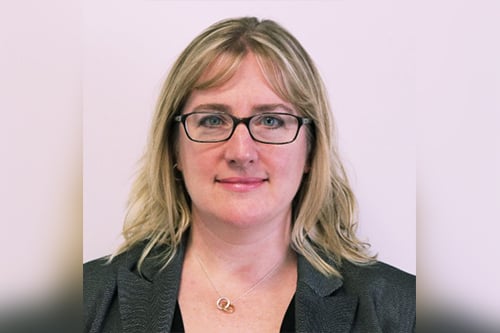

Since the announcement of the Aon-Willis Towers Watson merger, the implications for the insurance industry have been widely deliberated. From its potential impact on competition in the broking industry to the cyber exposures faced by combining firms, this ‘mega-merger’ has garnered a lot of attention and discussion within the sector. A key area still ripe for evaluation, according to Lisa Smith (pictured) who heads up the US insurance practice of the global consultancy, Capco, is whether it could represent a boon for innovation in the insurance industry.
“The real key to whether the Aon-Willis merger will lead to further innovation is the successful leverage of [this combination],” she noted. “The broker management system or agency management system vendors know how to do these data mergers. They’ve grown to be able to support the capacity of bigger databases, but we haven’t really seen these agencies get better scaling beyond that capability of the database size. I think if Aon-Willis have the opportunity to implement really neat technology following their merger, leveraging their commercial resources and their data analytics resources at this new scale, there’s some real opportunity for excitement.”
Smith is now hoping for wider disruption on the commercial side of the sector, noting that, in personal lines, data mergers have become fairly routine over the last 10 years. It would be good to see some drive when it comes to the ease of doing business for commercial lines, she said, and there is so much opportunity in this area. The fact that these brokerages are now becoming so big is encouraging because they can drive changes at insurers and vendors.
The innovation that could come from the Aon-Willis merger could provide some real-time solutions for policyholders, she noted, including the SEMCI (single-entry multiple company interface) effect. Brokers have pushed for this interface for a long time but excellent insurance consumer experiences are difficult enough to provide in a direct market let alone across multiple markets.
“The extra challenge that Aon Willis faces is doing that across different carriers now,” she said. “Consider clients who have a policy with company A for their home insurance and company B for their auto insurance, and their commercial insurance with somebody else. How are they [Aon Willis] going to create a consolidated view and let me, as a consumer, do the digital servicing with a single user-friendly interface? Once the vendors and carriers build these API interfaces, they become available to everyone giving the industry an opportunity to build on and extend these digital capabilities.
“That’s never been truer than with COVID right now. Capco is seeing with our banking clients that the adoption of digital apps is skyrocketing. Before, with branches close to my office or on my way home, I had no incentive to use these digital solutions. Now with COVID I do.
“So, to obtain some disruption and some innovation out of this merger, Aon-Willis must be able to champion getting those APIs built. And I think that, while the merger may generate other M&A activity, getting those interfaces built is what will really give everybody a whole new set of tools which they can use.”
Getting this commercial system to work is both an opportunity and a challenge, Smith said, and, while there’s a lot of “what-ifs” when it comes to innovation, if Aon and Willis can pull it off it will be a fantastic boon for them. If they can’t, however, it is going to add a new challenge, growth without scale, to the struggles that exist within all merger activities - such as combining different cultures, and different personalities all having to pull together to make the combination work.
“It’s definitely going to be an uphill battle for them but I’m an optimist on this,” she said. “My optimism is that they understood this opportunity going in but my fear is that maybe they don’t know just how far they’ll be able to go with this and what they can do with it.
“There’s a lot of third-party data vendors and technology start-up companies who are offering to sell brokers’ data back to the carriers or the rating companies, and to sell data back to the brokers. For brokers to be able to leverage their own data and use their own actual experiences in this area is going to be hugely exciting and far more cost-effective for them – if they can do it.”
